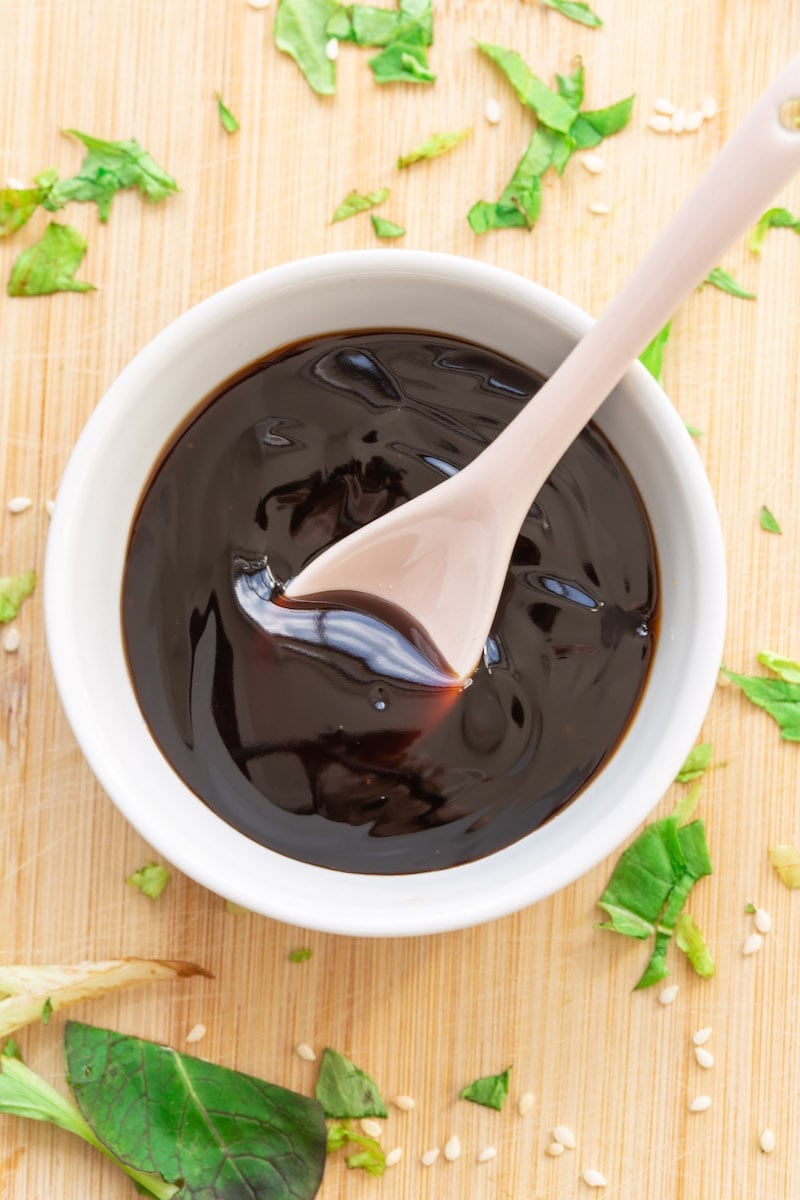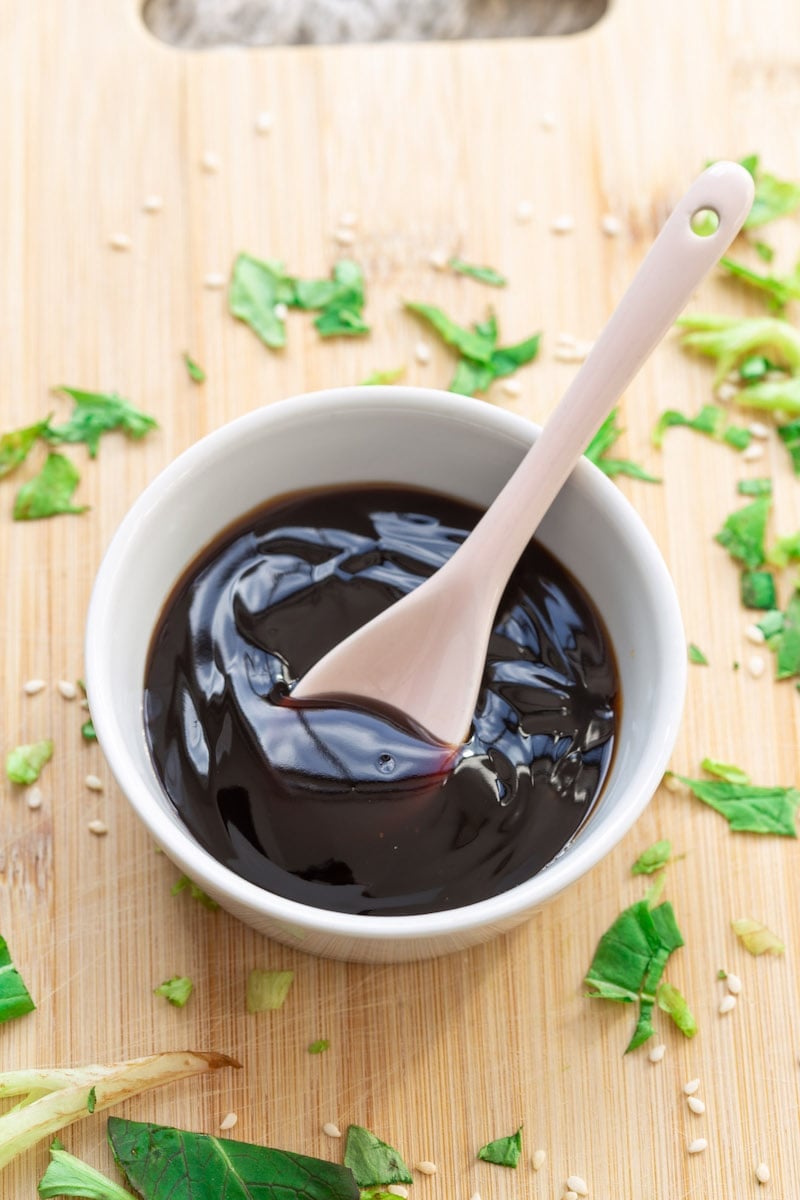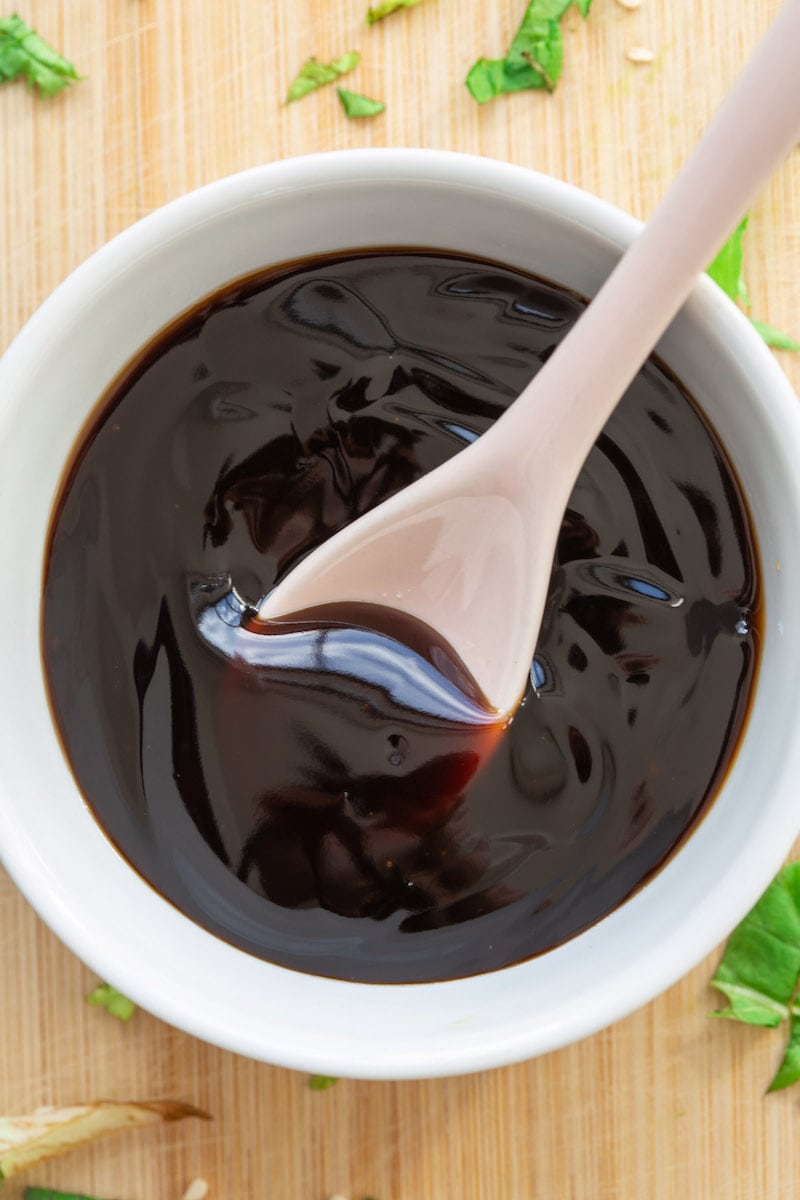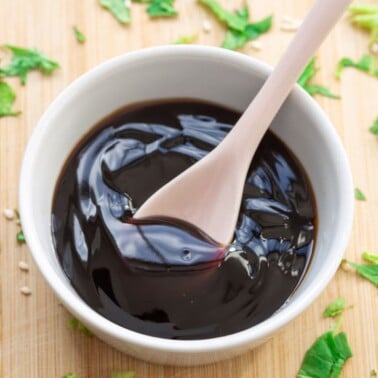Love Asian sauce recipes? Try my katsu sauce, bulgogi sauce, peanut sauce, and tempura sauce. If you’ve made my unagi or enjoyed unagi sushi before, you’ll know that the seriously addictive sauce drizzled over the top makes it extra delicious. Now, contrary to popular belief, there aren’t actually any eels in the sauce, nor does the sauce taste like eels!
Why I love this recipe
3 Ingredients. And they aren’t hard-to-find ones either! Cheaper than store-bought. Pre-bottled eel sauce costs a fortune (thank you, import fees!) SO versatile. My family loves to use it as a dipping sauce or to jazz up some protein (it works as a really good marinade).
Ingredients needed
Soy sauce. Use a good quality soy sauce brand as it makes all the difference. We like the traditional Kikkoman brand, which also comes with a gluten-free option. Sugar. White sugar is preferred, but brown will also work. Mirin. Japanese cooking alcohol that is on the sweeter side and works well in many Japanese sauces and marinades. If you don’t have mirin, dry sherry will work. If you’d like to have an alcohol-free option, try rice vinegar and add an extra teaspoon of sugar.
How to make eel sauce
I’ve included step-by-step photos below to make this recipe easy to follow at home. For the full printable recipe instructions and ingredient quantities, scroll to the recipe card at the bottom of this post. Also known as Unagi No Tare and Nitsume, eel sauce is a sweet, sticky, and thick condiment used in tons of Japanese recipes. It’s an essential ingredient in any dish involving Unagi (eel- hence the name) and is also popular in sushi, gyoza, and beef negimaki. Step 1- Heat ingredients: Start by adding all the ingredients into a small saucepan. Place it over medium heat and bring it to a simmer. Reduce the heat to low and let it simmer for a further 4-5 minutes, or until it has thickened up. Step 2- Let it thicken: Now, remove the saucepan from the heat and let it reach room temperature. Stir it, then use it immediately or store it for later.
Arman’s recipe tips
You must let the sauce simmer until it reduces significantly, or else it won’t be as sticky or thick. If you would prefer a thicker sauce, add 1-2 tablespoons of cornstarch. Be sure to whisk it well very into the mixture or else clumps will show up. Feel free to add spices or herbs like red pepper flakes, minced garlic, or ginger.
Storage instructions
To store: Leftovers can be stored in the refrigerator, covered, for up to one week. Be sure to stir it before using it, as there may be a little separation. The beauty of this sauce is just how versatile it is. Because it has characteristics similar to BBQ sauce, you can use it in a plethora of ways. Here are some ideas:
As a marinade. Brush over some air fryer chicken breast, air fryer pork chops, or any protein of choice. I clearly love using it in my air fryer recipes because the high heat and quick cooking time caramelizes the sauce so nicely. In a stir-fry. Add a punch of flavor to your usual stir-fries by stirring through some of the sauce at the end of the cooking process. To dip appetizers in. While ketchup and BBQ sauce are great, change things up and give your taste buds something extra delicious to dip your snacks in! Try it with armadillo eggs, chicken lollipops, or air fryer salmon bites. As a pizza sauce. For those of you who love BBQ chicken pizza or meat lovers, swap out the standard sauce for this, and your taste buds will thank you.
To freeze: Place the sauce in a glass jar and store it in the freezer for up to two months.
More umami-forward sauces to try
Potsticker sauce Big mac sauce Hot honey sauce Spicy mayo Pomodoro sauce Sugo
Originally published August 2022, updated and republished April 2024



